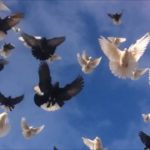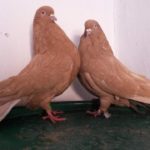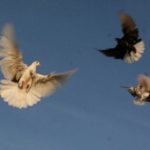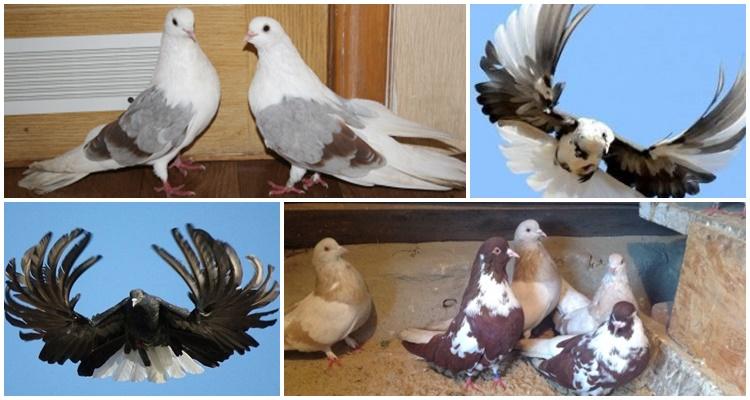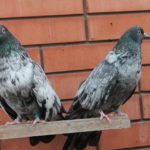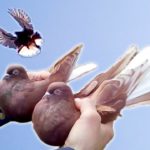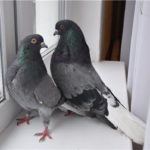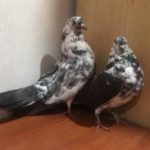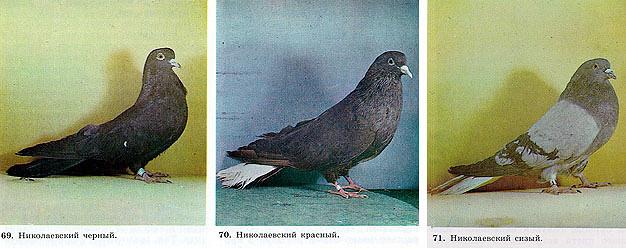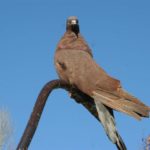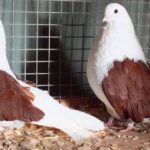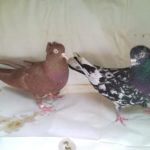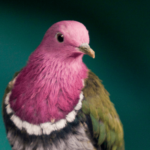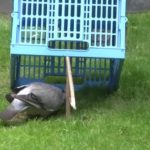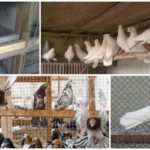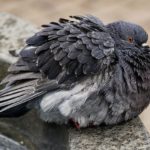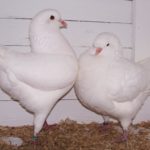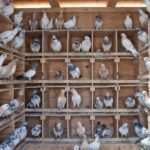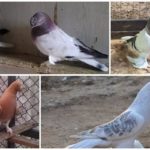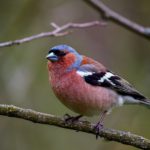One of the most popular high-flying breeds is the Nikolaevskaya. Birds soar upward in a non-circular manner, stay in flight for a long time, performing exciting stunts. The breed of Nikolaev pigeons was largely formed under the influence of the Black Sea climate - warm, arid, with constant light winds and predominantly ascending air flow. Birds are distinguished by their active behavior, endurance, ease of care, and fertility.
History of appearance
Nikolaevskaya is a Ukrainian breed that appeared in the settlement of the same name in the 19th century. Presumably, Ukrainian breeders crossed local pigeons with foreign breeds brought by sea. During the selection process, pigeons were selected that were distinguished by their circling takeoff. The current characteristics of the breed were influenced by the climatic conditions of the Black Sea region. The flight of birds depends on rising air masses and warm, rather strong winds blowing in this area.
Not only ordinary Ukrainians, but authoritative residents of the country are involved in breeding Nikolaev pigeons. Thanks to their unpretentiousness, Nikolaev pigeons have gained popularity in the CIS and throughout Russia. Breeders can be found from Yakutia and the Far Eastern region to the Rostov region. The main goal of breeding the Nikolaev breed is participation in pigeon competitions.
Description and characteristics of Nikolaev pigeons
Nikolaev pigeons have a specific anatomy that distinguishes them from their ordinary relatives and makes them wonderful flyers. High-flying Nikolaevites are distinguished by their elongated “fluid” physique, mobility of wing joints, dense plumage with a wide plane of elastic feathers, and a large tail. This anatomy provides greater resistance to air flow. And developed muscles allow birds to fly for a long time.
The body length of the Nikolaev pigeon is about 40 cm. When the bird stands on a horizontal surface, its body is inclined at an angle of 45 °C.
The external description of the Nikolaev breed is given in the table.
| Head | Elongated, with a dry and narrow skull, a weakly defined occiput, smoothly covered with feathers, a flattened forehead, smoothly merging into the parietal part |
| eyes | small, thin eyelids, single-row, milky in color, iris of different shades of red (from golden yellow to red-brown) |
| beak | medium, closer to large, thin, slightly curved at the end, tightly closing, the horny tissue is dense, the angle between the lines of the forehead and beak is obtuse, the cere (base) is light, small, tightly fitting to the beak, the subbeak part smoothly passes into the neck |
| torso | elongated, graceful, not massive, muscular chest, voluminous, wide, neck is short, rather thick, richly feathered, smoothly expanding towards the shoulders, the vertebral line is almost straight, the shoulder girdle is wide |
| wings | long, loosely lying on the body, closed, the flight feathers are even and wide, brought together on the tail, but do not reach its edge |
| limbs | short, hairless, deep red skin, claws, depending on the base color, beige or gray |
| tail | large, densely feathered, tightly compressed when at rest, fan-shaped when taking off, with smooth and elastic tail feathers (up to 16 pieces) |
| color | varied - there are individuals black-faced, red, white, marbled, with colored sides and spots on the back |
Nikolaev pigeons are divided into several types according to their flight style:
- Lark. A flying dove opens its wings perpendicular to its body. At the same time, the flapping of its wings resembles the flight of a lark. Birds are capable of freezing in the air.
- Butterflies. This is the name of Nikolaev pigeons, which make frequent and uniform flapping of their wings. In this case, the wings are significantly protruded forward, forming an angle of 30° with the plane of the body. Birds move without fading.
- Serpasti. Pigeons fly smoothly. At the same time, the wings are turned out so much that they take on a sickle shape.
- EndWhen Nikolaev pigeons take off, they immediately raise their wings above their heads at a right angle. This ensures that you can soar up almost vertically. The bird's body is directed towards the air flow.
Flight styles
The Nikolaev pigeon is also called the “clouder cutter”. The bird rises above the clouds. The unique ability of the Nikolaev breed is vertical lifting without circular movements. In this case, the tail is open, the wings flap at an angle of 45 ° to the vertical surface. This ability is due to the ability of Nikolaev pigeons to interact with the ascending coastal air current.
The bird quickly gains altitude, disappearing from sight in the sky. With good care and regular training, pets are able to fly for up to 8-10 hours. Nikolaevskys are exclusively “wind” birds; for correct tricks in the sky, a wind of 8-10 m/sec is required. The most common among Nikolaev residents are larks and butterflies. The rarest representatives of the breed are end dogs.
Bird training
Whatever style Nikolaev pigeons fly in, they need to be driven from the age of 1.5 months. It is difficult to force birds that sit too long to exercise. Training must be regular, since neglected birds gradually lose the skills acquired through training. First, training takes place in an aviary, then the birds are released from the dovecote. There is no need to overwork your pets; training should not last more than 6 hours; pauses must be taken during training.
The first training flights take place in the company of an adult bird, which the young birds look up to. After 4-6 training sessions, young pigeons are ready for independent learning.
You should not release Nikolaev pigeons on a stormy day, with a sharply blowing wind or standing fog, since there is a high risk that the long and high flying pigeons will get lost and be carried away by a strong air flow. Lost pigeons either get lost forever or find their way to home within 2-3 days. The optimal time for departure is early morning. Night flights are also possible, but in this case it is necessary to turn on a powerful light source in the dovecote so that the pigeons can see in the dark where the house is.
Main pros and cons
The non-capricious, easy-to-breed Nikolaev breed is suitable for novice breeders.
Nuances of maintenance and care
Nikolaev pigeons quickly adapt to the surrounding conditions and climate, are not capricious when feeding, and are distinguished by lively and active behavior.
The dovecote should be spacious, ventilated, protected from drafts and direct sunlight. The maximum summer temperature inside is +25 °C, the minimum winter temperature is +5 °C. Daylight should last at least 12 hours, so in winter they turn on artificial lighting sources. The dovecote is regularly cleaned and disinfected. A spacious mesh aviary is attached to it, in which the birds are prepared for flight.
During the winter months, males and females are kept separately. The birds are brought together in February to produce chicks in the spring.Before the mating season, nests are set up for females: wooden boxes are installed, filled with sawdust, fluff, and hay.
What to feed the birds?
The basis of the diet of Nikolaev pigeons is plant food. Ready-made feed mixtures for pigeons are expensive, so many breeders prefer to prepare their own feed. The composition of the feed is determined by the period of the bird’s life and the state of the body. What percentage of a particular product a pigeon should receive (%) is indicated in the table.
| Feed | Mating season | Chick development | Shedding | Winter months |
| raw grass | 5 | 3 | 5 | – |
| herbal granules | – | 5 | – | 10 |
| wheat | – | 20 | 10 | – |
| barley | 20 | 20 | 10 | 30 |
| cereals | 20 | – | 20 | 30 |
| corn grain | 10 | 10 | 10 | 10 |
| millet | 15 | 20 | 10 | – |
| peas | 15 | 10 | 10 | – |
| lentils | – | – | 10 | 10 |
| Vika | 15 | 10 | 10 | 10 |
| flax-seed | – | – | 2 | – |
| chalk, sand | – | 2 | 3 | – |
During the mating season, the daily portion of food is divided into three doses. Birds are fed at approximately equal time intervals. During the molting period, pigeons are fed 4 times a day. The rest of the time, birds are given food 2 times a day.
Breeding specifics
Nikolaev pigeons have a highly developed parental instinct. The chicks are born strong and immediately behave actively. The Nikolaev breed can be bred using natural and incubator methods.
Naturally
Nikolaev pigeons usually form a pair themselves. But if chicks with certain genetic characteristics are required, the owner selects a male and a female and places them in a separate cage. One-year-old and two-year-old females are the most fertile. The first clutch usually contains 1-2 eggs. The male and female sit on the clutch in turns. In the first days of life, the chicks are fed with milk secreted from the parents' crop.
Hatchery
Nikolaev pigeons are rarely bred in an incubator, since representatives of this breed are wonderful parents. But if such a need arises, then do the following:
- Eggs without cracks or dents are selected.
- Place in a box lined with cotton wool and keep at 12-15 °C. Eggs are collected within a maximum of 12 days.
- The collected eggs are placed in an incubator. Set the temperature to 37.5 °C.
- The eggs are turned regularly.
After 18 days, the chicks hatch. They are fed 6 times a day from a pipette. A replacement for goiter milk is a mixture of mashed chicken yolk and cow's milk. To teach a chick to drink from a drinking bowl, its beak is carefully immersed in water, making sure that it does not choke. For up to a month, incubator chicks are kept in a separate warm room where there are no drafts. They are then paired with the pack.
Possible diseases
Pigeons are susceptible to infectious and parasitic diseases. The most common occurrences are:
- epilepsy (vertical), accompanied by rotation and tilting of the head;
- salmonellosis - the bird twitches its limbs and wings, the droppings are bloody and mucous, the skin becomes covered with nodules;
- ornithosis – lacrimation, photophobia, sticking of the eyelids are noted;
- coccidiosis - the bird eats poorly, is apathetic, has diarrhea, and has seizures;
- trichomoniasis - the pigeon looks weak, does not fly, a yellow coating is noticeable in the depths of the oral cavity;
- helminthiasis - the bird does not eat, loses weight;
- candidiasis - the pigeon is lethargic and has diarrhea;
- anemia is accompanied by lethargy and decreased muscle tone.
If suspicious symptoms occur, the pigeon must be separated from the flock and immediately shown to a veterinarian so that he can prescribe treatment. It is unacceptable to treat the bird yourself. To prevent pigeons from getting sick, you need to keep the dovecote clean and dry, and regularly disinfect the walls and equipment. Birds must be vaccinated in a timely manner and given vitamin supplements.

